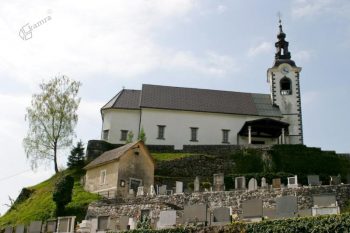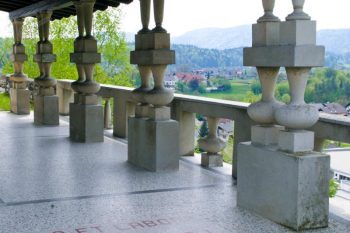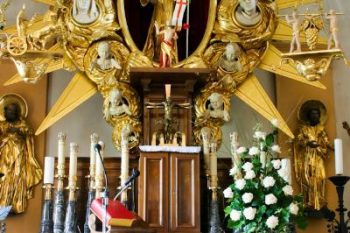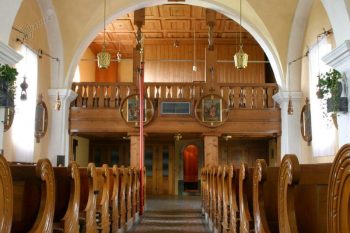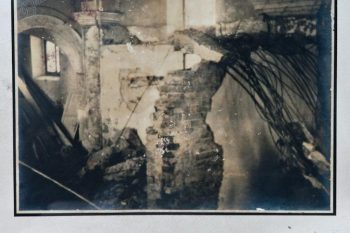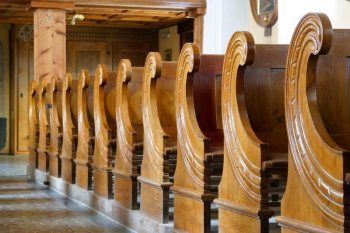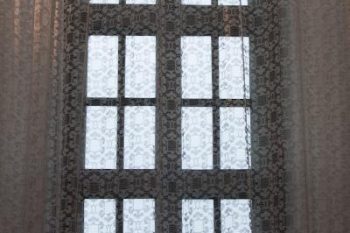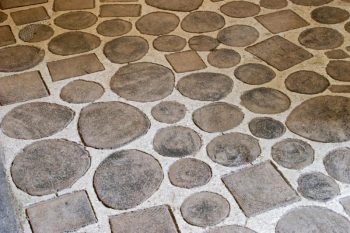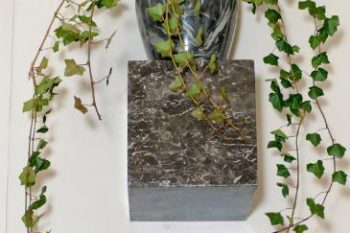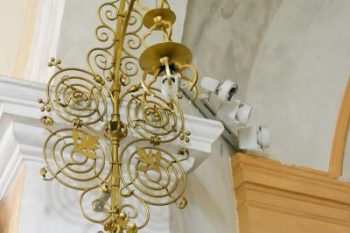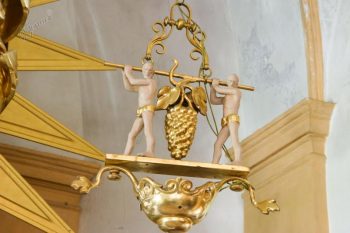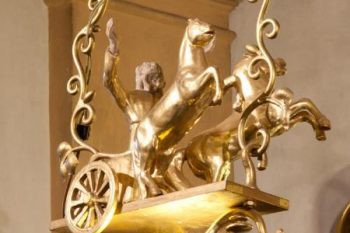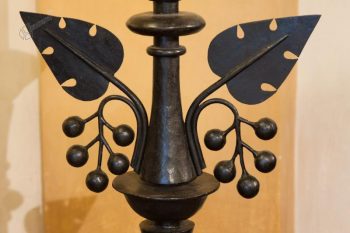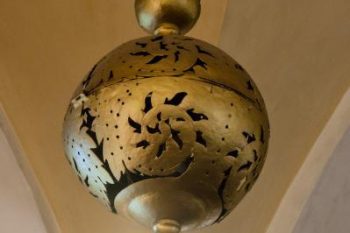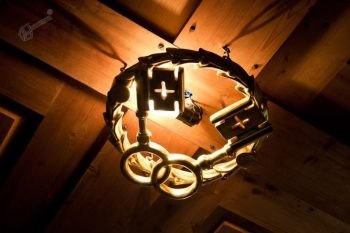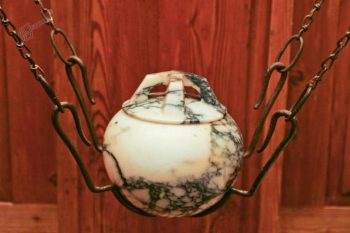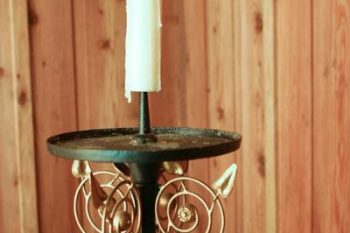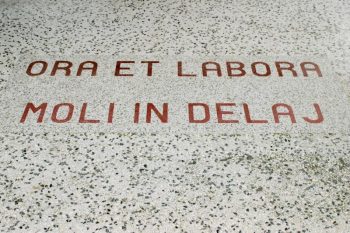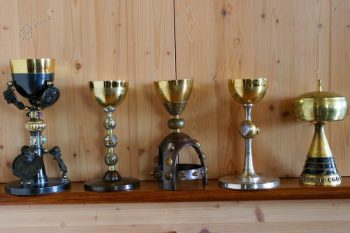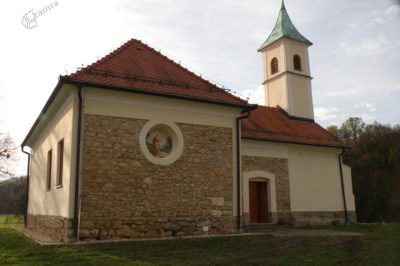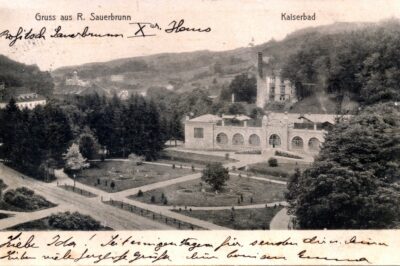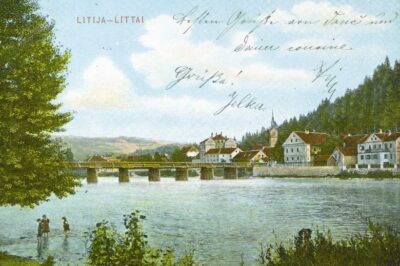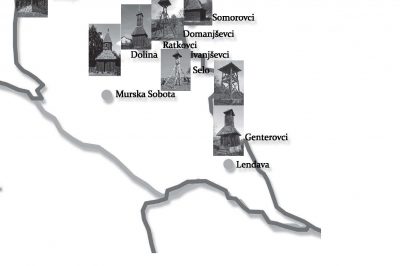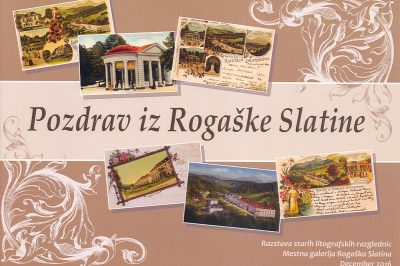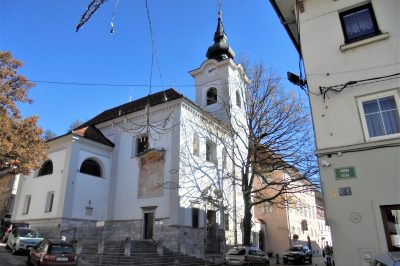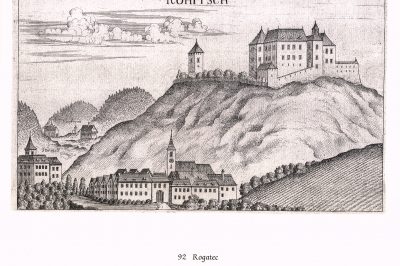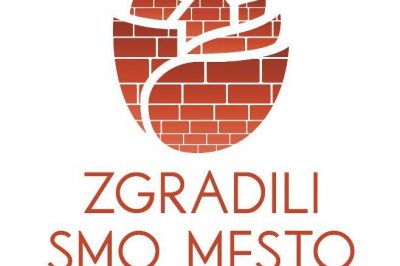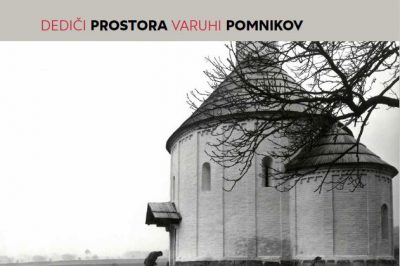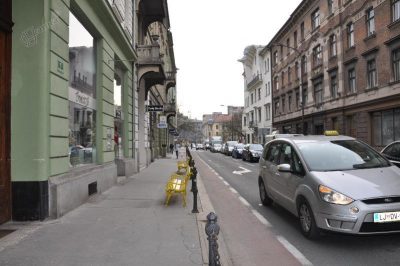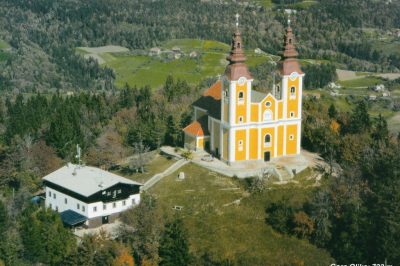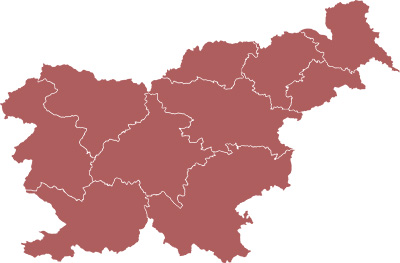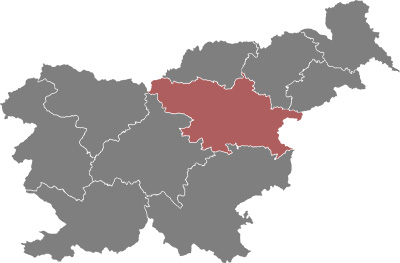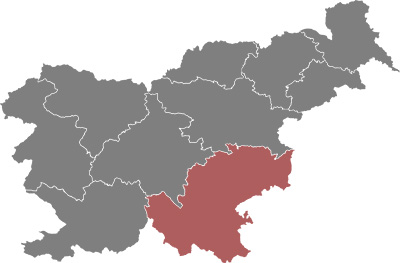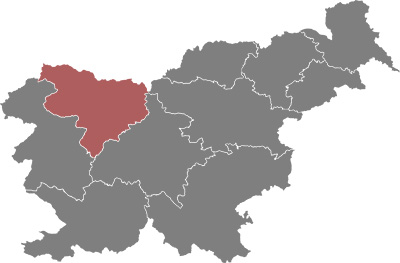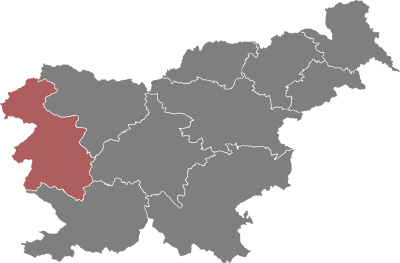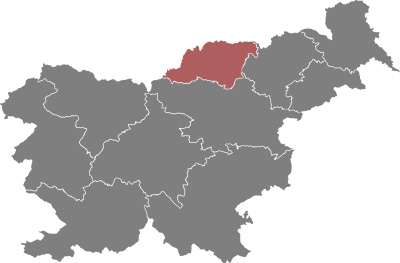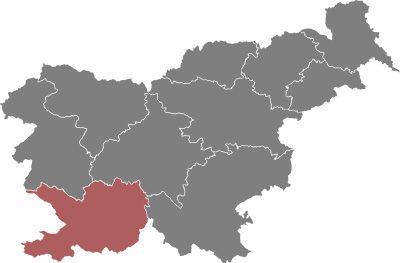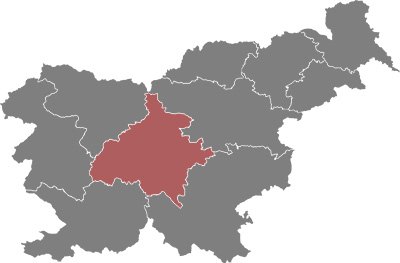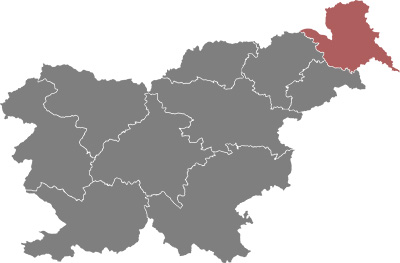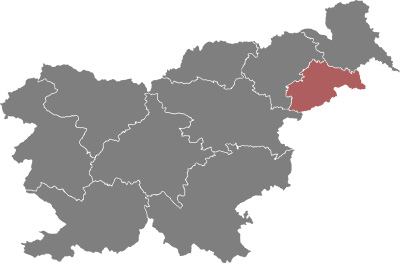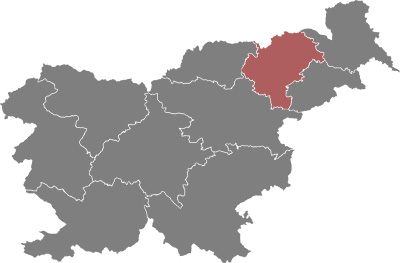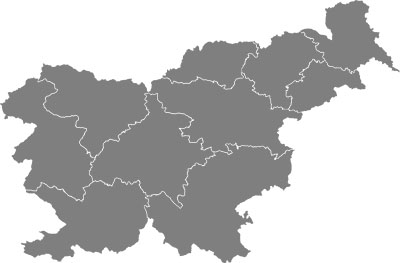The statement, made by France Stele, that the church in Zgornje Stranje is a museum of Plečnik’s arts and crafts during his post-war period is true. Dr. Andreja Eržen talked about the renovation in front of the camera.
The church of St. Benedict in Stranje was heavily damaged during the Second World War. Because of its strategic position, the German army changed it into a military post. The windows were sealed, the nave was divided into two floors, with a 40 cm wide concrete platform, and bunkers were built around the church. The church furnishing was, unfortunately, burnt.
The then-priest, Franciscan Martin Perc, invited Plečnik to participate in the renovation, but he refused the invitation. Only after repeated requests, and after the intervention of Dr. Emilijan Cevc, did he promise to view the church. Majda Neřima, an architect from Kamnik and Plečnik’s former student, cooperated on the initial work. In 1946, she made the design for an extension of the church and the incorporation of the bell tower into the church building. In the same year, Plečnik came to Stranje and took over designs for the renovation.
The renovation of the church in Stranje lasted from 1946 until 1957. Plečnik made designs for the construction of the exterior portico, the arrangement of a new main entrance to the church, the construction of a new entrance to the bell tower, and the designs for a new baptistery, choir loft and a modification of a vestry. Special attention was put to the interior decoration of a church. Due to widespread lack of materials, Plečnik used what was available after the war, namely timber, concrete, and river stones. Remnants of the old church furnishings were placed in the architecture.
Primarily local craftsmen cooperated on the renovation, with specialists brought in from elsewhere only when no appropriate local could be found. These included Bergant Maks, the woodcarver and the gilder from Kamnik; Franc Vettorazzi, the stonemason from Stranje; Franc Koncilja, the carpenter from Mekinje; Alojz Kladnik, the carpenter from Stranje; Franc Končan, the locksmith from Domžale; and Franc Jenko, the organ master from Šentvid.
The baptistery was placed between the church and the bell tower, so that it is separated from the rest of the church. Due to its location and interior furnishing, the baptistery became a model for subsequent designs of baptisteries. The wooden furnishing of the baptistery was made by a local master carpenter, Franc Koncilja. The wooden floor is of special interest, as the architect wanted it to be warm in winter and in summer. It is made of boiled wooden cubes that are cast into the concrete. His students followed this example, and went on to design similar floors.
Unusually, the windows have curtains, which are meant to block the view outside, and focus the believers’ view on the altar. For the church of Stranje, three chalices were made by Plečnik: The chalice of the patron St. Benedict, a chalice for Sunday Mass, and chalice for weekdays. The chalice that, in the beginning of 1950s, was made for the chapel of Velika Planina is kept in Stranje. Until 1996, the church remained unchanged. At that time, the facade was renovated under the guidance of the Institute for the Protection of Natural and Cultural Heritage from Kranj (ZVNKD).
Literature and sources:
The archives of the parish church office of Zgornje Stranje
Andrej Hrausky, Janez Koželj, Damjan Prelovšek: Jože Plečnik: Dunaj, Praga, Ljubljana. Ljubljana: Cankarjeva založba, 2006.
Information source:
Matija Selan, the parish priest in the parish of Stranje in 2007.


